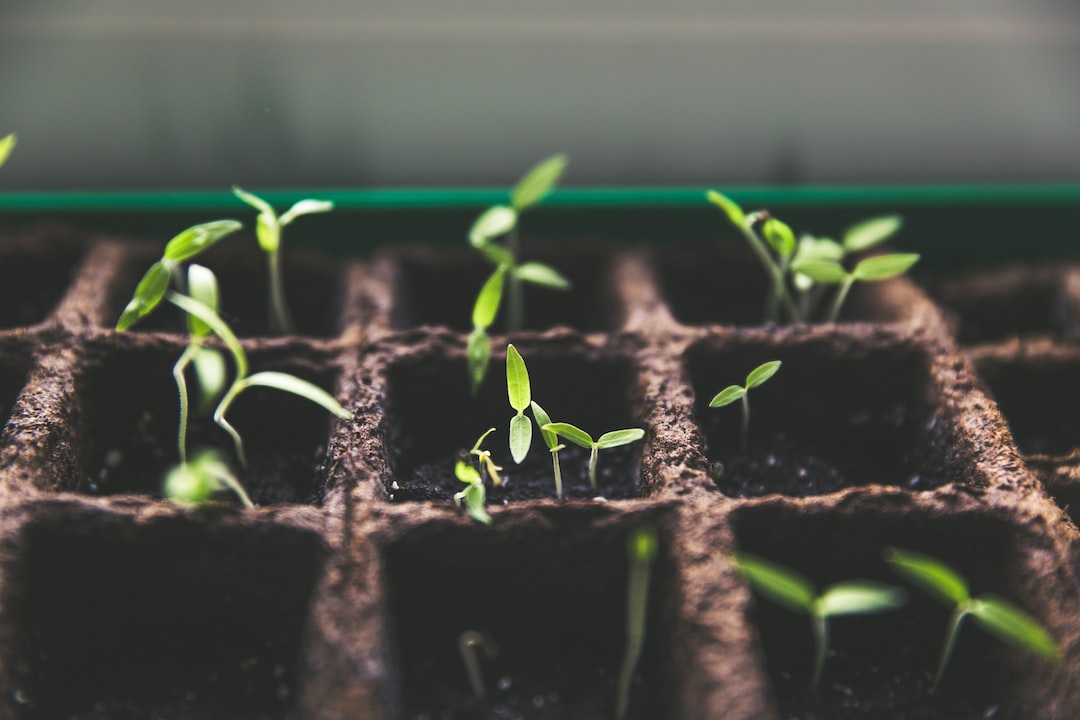
Welcome, fellow cannabis enthusiasts! Germination is the crucial first step in the life of a cannabis plant. It’s when a seedling emerges from its seed and begins to grow. But why is it so important? Well, without successful germination, you won’t have a plant to harvest. Simple as that.
Our goal with this guide is to teach you simple and effective techniques to germinate cannabis seeds and achieve maximum yield. Whether you’re a seasoned grower or just starting, we’re here to help you succeed.
As Johnny Ganja, we’re all about keeping things casual, informative, and confident. We want to share our passion for cannabis with you and provide the best possible customer service. So, let’s dive right in and kickstart your cannabis growing journey!
Choosing the Right Seeds
Starting with high-quality seeds is essential. It’s like cooking with fresh ingredients. Better seeds lead to better results. But where do you find these seeds? Let us help!
Reliable Seed Banks and Tips for Selection
Reliable seed banks are your best friends. They offer a wide variety of strains and guarantee top-notch genetics. When selecting seeds, look for these traits:
- Fully matured seeds with a dark brown or grayish color
- Firm to the touch with a smooth surface and no cracks
- A waxy, shiny coating on the seed’s outer layer
Buy cannabis seeds from JG Seeds, you will get it all. Now, let’s talk about the different seed types and their germination needs.
Autoflowering Seeds
These babies are low-maintenance. Autoflowering seeds don’t need specific light cycles to start flowering. They’ll do it on their own. Germination requirements are similar to other seed types, but they tend to be a bit more sensitive to their environment. So, be gentle!
Feminized Seeds
Want to grow female plants exclusively? Feminized seeds are your answer. They’re bred to produce only female plants, which means no worrying about separating males. Germination-wise, they require the same conditions as regular seeds. Just keep an eye on temperature and humidity!
Regular Seeds
Regular seeds are the classic choice. They produce both male and female plants, so you’ll need to identify and remove males to prevent pollination. Germination conditions are standard, but remember that some strains may have unique requirements. Always research your chosen strain before getting started.
Germination Methods
So, you’ve got your seeds. Now what? It’s time to germinate them! There are several methods, each with its pros and cons. Let’s explore them.
Paper Towel Method
This popular method involves placing seeds between moist paper towels. Here’s how:
- Moisten two paper towels and wring out excess water.
- Place seeds on one paper towel, leaving space between them.
- Cover seeds with the second paper towel and place in a sealed container or plastic bag.
- Store the container in a warm, dark place. Check daily for germination and moisture.
- Once the taproot emerges, carefully transplant the seedlings into their growing medium.
Pros: Easy, quick, and allows you to monitor seed progress.
Cons: Delicate taproots are exposed and can be damaged during transplanting.
Direct Soil Method
With this method, seeds are sown directly into their final growing medium. Here’s how:
- Fill pots or containers with moist, well-draining soil or growing medium.
- Make a small hole (about 0.5 inches deep) in the soil for each seed.
- Place one seed in each hole and cover it with soil.
- Keep the soil moist but not saturated, and maintain a warm, dark environment until seedlings emerge.
Pros: Natural, minimizes transplant shock, and protects taproots.
Cons: Germination rates might be lower, and it’s harder to monitor progress.
Soaking Method
This method involves soaking seeds in water before planting. Here’s how:
- Fill a glass or container with room temperature water.
- Add seeds to the water and let them soak for 12-24 hours.
- After soaking, plant seeds immediately in their growing medium.
Pros: Softens seed shells and speeds up germination.
Cons: Seeds can drown or rot if soaked for too long.
Which Method to Choose?
Ultimately, the best method depends on your seed type and personal preference. Autoflowering seeds might benefit from the paper towel method, while regular and feminized seeds can thrive with any method. Experiment and find what works best for you and your cannabis plants. Happy growing!
Optimal Germination Conditions
Like any living thing, cannabis seeds need the right environment to grow. Temperature, humidity, and darkness are key. Let’s dive into the details.
Temperature and Humidity Requirements
Cannabis seeds prefer it cozy. Aim for a temperature between 68°F and 77°F (20°C and 25°C). As for humidity, keep it around 70%. Too cold or dry, and your seeds may struggle to germinate. Too hot or wet, and they could rot. It’s all about balance!
Importance of Darkness
Did you know cannabis seeds love the dark? Darkness encourages germination and protects the delicate taproot. So, keep your germinating seeds away from light sources.
Tips to Maintain Ideal Conditions
Maintaining perfect conditions can be tricky. Here are some tips:
- Use a seedling heat mat to keep the temperature consistent.
- Place a humidity dome over your seeds to maintain moisture levels.
- Monitor temperature and humidity with a digital thermometer and hygrometer.
- Keep seeds in a dark, warm place like a cupboard or closet.
By following these tips, you’ll create the perfect environment for your cannabis seeds to germinate and grow. Remember, happy seeds make happy plants!
Transplanting Germinated Seeds
Once your seeds have germinated, it’s time to transplant them. This crucial step requires care and attention. Let’s explore the process and some best practices.
Safely Transplanting Germinated Seeds
Transplanting is like moving day for your seedlings. Here’s how to do it safely:
- Prepare the growing medium in a pot or container, ensuring it’s moist and well-draining.
- Make a small hole in the medium, about 0.5 inches deep.
- Using sterilized tweezers or your fingers, gently pick up the germinated seed by its shell, being careful not to touch the delicate taproot.
- Place the seed, taproot down, into the hole and cover with a thin layer of the medium.
- Water gently, and continue to keep the medium moist but not saturated.
Best Practices to Avoid Taproot Damage
Protecting the taproot is essential. Here are some best practices:
- Always handle seeds and seedlings gently.
- Use sterilized tools and clean hands to prevent contamination.
- Don’t overwater or overcrowd seedlings, as this can damage roots and lead to disease.
Tips for Early Growth Stage Care
Here are some tips to help your seedlings thrive during their early growth stage:
- Maintain consistent temperature and humidity levels.
- Provide 18-24 hours of light per day, using a low-intensity light source like fluorescent tubes or LED grow lights.
- Water seedlings with a fine spray or mist to prevent overwatering.
- Monitor for signs of pests or diseases and address issues promptly.
By following these guidelines, you’ll set your cannabis seedlings up for success and enjoy a bountiful harvest down the road.
Troubleshooting and Common Issues
Germination can be a bit tricky sometimes. But don’t worry! We’re here to help you tackle common issues and get your seeds growing in no time.
Common Germination Problems and Solutions
Here are some problems you might encounter and their solutions:
- Problem: Seeds don’t germinate or take too long.
- Solution: Ensure the seeds are fresh, stored properly, and exposed to the right temperature and humidity. Patience is key!
- Problem: Seedlings are weak or stretchy.
- Solution: Provide adequate light and avoid overwatering. Seedlings need a strong light source to grow sturdy stems.
- Problem: Seeds rot or develop mold.
- Solution: Avoid overwatering and ensure proper air circulation. Excess moisture can lead to rot and mold.
Identifying and Resolving Issues During Germination
Here are some tips for identifying and resolving germination issues:
- Monitor temperature and humidity levels closely, adjusting as needed to maintain optimal conditions.
- Inspect seeds and seedlings daily for signs of mold, rot, pests, or other issues. Early detection is crucial for successful treatment.
- Keep your germination area clean and sterile to minimize the risk of contamination.
- Research your chosen strain’s specific germination requirements, as some strains may have unique needs.
- Don’t be afraid to ask for help! Reach out to fellow growers, online forums, or even us here at Johnny Ganja for advice and support.
By staying vigilant and addressing issues promptly, you can ensure a successful germination process and set your cannabis plants up for a bountiful harvest.
Conclusion
Let’s recap what we’ve covered in this guide:
- Choosing high-quality seeds and understanding their germination needs.
- Selecting the best germination method for your seed type and personal preference.
- Maintaining optimal temperature, humidity, and darkness for successful germination.
- Transplanting germinated seeds safely and caring for seedlings during early growth.
- Troubleshooting common germination issues and keeping your plants healthy.
We encourage you to apply these techniques for successful cannabis germination and maximum yield. With a little patience, care, and attention, your cannabis plants will thrive!
At Johnny Ganja, we’re passionate about cannabis and committed to providing top-notch customer service. We hope this guide has been helpful, and we’re always here to support you in your cannabis growing journey. Happy growing, friends!








